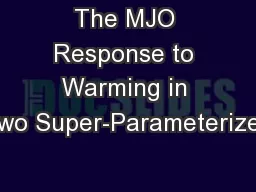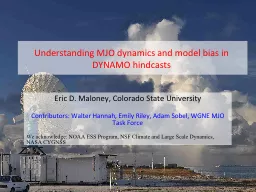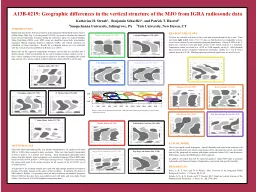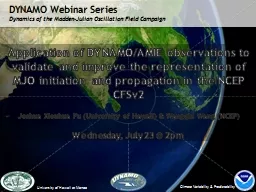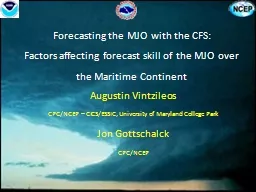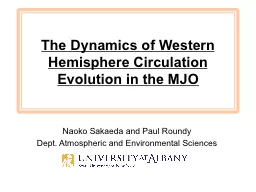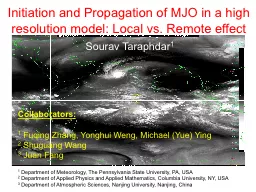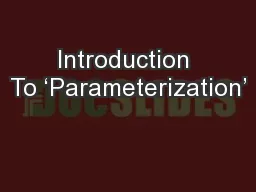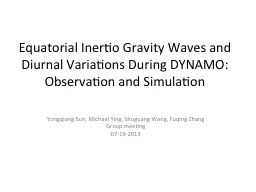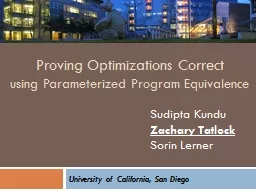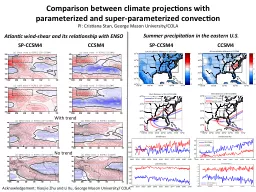PPT-The MJO Response to Warming in Two Super-Parameterized
Author : faustina-dinatale | Published Date : 2017-08-01
GCMs Nathan Arnold 12 with Eli Tziperman 1 Zhiming Kuang 1 David Randall 2 and Mark Branson 2 1 Harvard University 2 Colorado State University Tropical Dynamics
Presentation Embed Code
Download Presentation
Download Presentation The PPT/PDF document "The MJO Response to Warming in Two Super..." is the property of its rightful owner. Permission is granted to download and print the materials on this website for personal, non-commercial use only, and to display it on your personal computer provided you do not modify the materials and that you retain all copyright notices contained in the materials. By downloading content from our website, you accept the terms of this agreement.
The MJO Response to Warming in Two Super-Parameterized: Transcript
Download Rules Of Document
"The MJO Response to Warming in Two Super-Parameterized"The content belongs to its owner. You may download and print it for personal use, without modification, and keep all copyright notices. By downloading, you agree to these terms.
Related Documents

